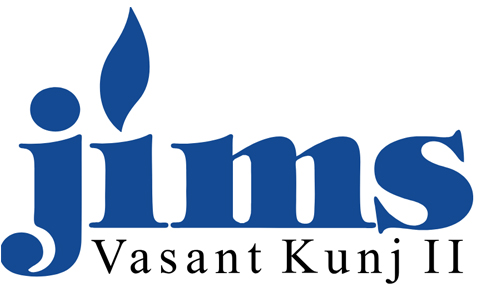In the speedily digitizing world, cloud computing has become a transformative force, reforming the way technology is accessed and used. For BCA students at JIMS Vasant Kunj II, gaining a solid grasp of this technology is not just beneficial—it is critical for both academic success and future career readiness. This blog explores the essentials of cloud computing, its relevance to the BCA curriculum, and its growing significance in the IT industry.
What is Cloud Computing?
Cloud computing refers to the on-demand delivery of computing services—such as servers, storage, databases, software, and networking—via the internet. This approach eradicates the need for establishments or individuals to own physical hardware, allowing them to access resources through third-party providers like Amazon Web Services (AWS), Microsoft Azure, and Google Cloud Platform (GCP).
Why It Matters for BCA Students at JIMS VK II
– Aligned with Curriculum: The BCA program at JIMS VK II integrates modern tech concepts like databases, networks, and web-based applications. Cloud computing naturally complements these subjects by offering real-world context and practical application.
– High Industry Demand: With more businesses moving to cloud-based infrastructure, expertise in cloud platforms is a highly sought-after skill. Familiarity with tools such as AWS, Azure, and GCP increases employability.
– Supports Project Work: Cloud services offer scalable and flexible environments, making them ideal for student-led software development and deployment projects.
– Cost-Effective Learning: Students can build, test, and deploy their applications on the cloud without investing in expensive physical infrastructure.
– Remote and Flexible Access: Cloud-based tools allow students to access their projects and resources from anywhere, making learning adaptable to hybrid and online environments.
Key Cloud Service Models
1. Infrastructure as a Service (IaaS): Provides virtualized computing resources over the internet.
Example: Amazon EC2
2. Platform as a Service (PaaS): Delivers a framework for developers to build and manage apps.
Example: Google App Engine
3. Software as a Service (SaaS): Offers software solutions via a subscription model through the internet.
Example: Microsoft 365, Google Workspace
Types of Cloud Deployment
– Public Cloud: Services are offered over the internet and shared across multiple organizations.
– Private Cloud: Dedicated exclusively to one organization, providing greater control and privacy.
– Hybrid Cloud: Merges the benefits of both public and private clouds to balance flexibility and security.
Practical Applications of Cloud Computing
– Education: Tools like Microsoft Teams and Google Classroom are cloud-powered, facilitating collaborative learning.
– Healthcare: Enables secure storage and management of patient data.
– Entertainment: Streaming platforms such as Netflix rely heavily on cloud infrastructure for content delivery.
– Banking and Finance: Cloud computing enhances data security, storage, and processing for online banking systems.
Important Tools for JIMS Students to Explore
– Amazon Web Services (AWS)
– Microsoft Azure
– Google Cloud Platform (GCP)
– Firebase
– Heroku
Conclusion
Cloud computing is no longer optional for future IT professionals—it is a necessity. At JIMS VK II, where innovation and education go hand in hand, mastering cloud technologies equips BCA students with competitive skills needed for the modern workplace. Understanding and leveraging the power of the cloud not only enhances academic learning but also opens doors to global career opportunities in tech.
By:
Umesh Gupta
Assistant Professor
BCA Department, JIMS VK II

Great insight! Edge computing truly opens exciting career paths for BCA students at JIMS Vasant Kunj II.